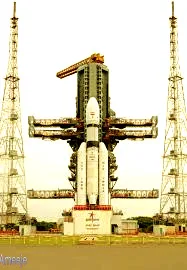The Chandrayaan missions are a series of lunar exploration missions undertaken by the Indian Space Research Organisation (ISRO). The word "Chandrayaan" translates to "Moon Vehicle" in Sanskrit, reflecting India's ambition to explore and study Earth's closest celestial neighbor. The Chandrayaan missions have played a pivotal role in advancing India's space program and have contributed significantly to the scientific understanding of the Moon.
Chandrayaan-1:
Chandrayaan-1 was the first mission of the Chandrayaan series, launched on October 22, 2008. The spacecraft consisted of an orbiter, a lunar impactor probe, and a Moon Impact Probe (MIP). The primary objective of Chandrayaan-1 was to create a detailed three-dimensional map of the lunar surface, study the Moon's mineral composition, and search for water molecules. Chandrayaan-1 employed several scientific instruments, including the Terrain Mapping Camera (TMC), the Moon Mineralogy Mapper (M3), the Lunar Laser Ranging Instrument (LLRI), and the Miniature Synthetic Aperture Radar (Mini-SAR). These instruments provided valuable data about the Moon's topography, mineralogy, and the presence of water ice in permanently shadowed regions of the lunar poles.
The mission achieved numerous milestones, including the discovery of water molecules on the lunar surface and the confirmation of the presence of helium-3, a potential future source of fusion energy.
Chandrayaan-2:
Chandrayaan-2 was India's second lunar exploration mission and was launched on July 22, 2019. The mission aimed to demonstrate India's ability to land on the lunar surface and operate a robotic rover. It consisted of an orbiter, a lander named Vikram, and a rover named Pragyan. Chandrayaan-2's primary objective was to further explore the Moon's south polar region and analyze its topography, mineralogy, and the presence of water ice. The lander and rover were intended to land near the lunar south pole, an area of significant scientific interest due to the possibility of water ice deposits.
However, during the final stages of the mission, the lander lost communication with the ground control, resulting in an unsuccessful soft landing. Despite the setback, the orbiter continues to orbit the Moon and is operational, conducting scientific observations and gathering data.
The Chandrayaan-2 mission showcased India's technological capabilities, particularly in terms of spacecraft navigation, lunar landing, and rover operations, even though the landing itself did not go as planned.
Chandrayaan-3:
Future Endeavor Following the partial success of Chandrayaan-2, ISRO announced plans for Chandrayaan-3, aiming to land a lander and rover successfully on the lunar surface. Chandrayaan-3 is expected to incorporate improvements based on the lessons learned from Chandrayaan-2 and address the technical challenges faced during the earlier mission.
The primary objectives of Chandrayaan-3 remain similar to its predecessors, including studying the lunar surface, analyzing the presence of water, and conducting experiments to enhance our understanding of the Moon's geology and mineralogy.
Chandrayaan-3 signifies India's commitment to advancing its space exploration program, fostering scientific research, and expanding international collaborations in lunar exploration. It is an important step towards future manned missions to the Moon and showcases India's aspirations to establish a strong presence in space exploration.
Conclusion:
The Chandrayaan missions have been instrumental in advancing India's space exploration program and contributing to our understanding of the Moon. Chandrayaan-1 successfully mapped the lunar surface and made significant discoveries regarding the Moon's mineral composition and the presence of water molecules. Despite the challenges faced during the landing phase, Chandrayaan-2 demonstrated India's capabilities in lunar missions and showcased technological advancements. With Chandrayaan-3 on the horizon, India continues its pursuit of lunar exploration, seeking to achieve new milestones and pave the way for future scientific endeavors and human exploration of the Moon.

